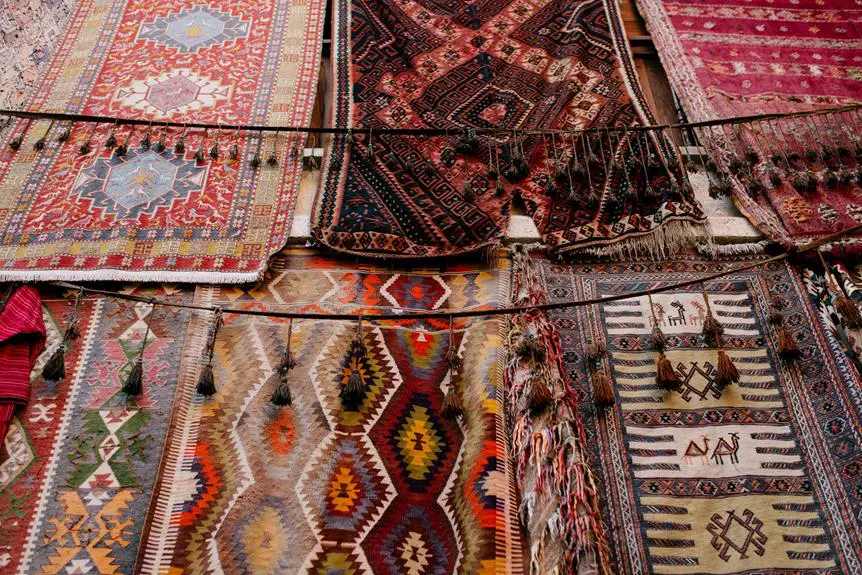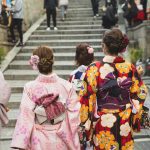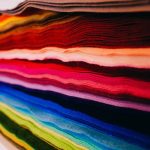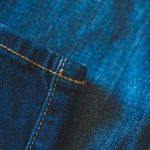When you consider the rich history of broadcloth fabric, it's fascinating to see how this textile has journeyed from the medieval courts of England to contemporary wardrobes. You might find it intriguing to learn about the production techniques that defined its early days and the ways it adapted to various fashion trends throughout Europe. As you explore its evolution, you'll discover how broadcloth shifted from a symbol of wealth to an everyday essential. What sparked this transformation, and how is broadcloth still relevant today?
Table of Contents
Origins of Broadcloth
Broadcloth originated in medieval Europe as a durable wool fabric, prized for its smooth finish and versatility. You'll find that its name comes from the term “broad cloth,” referring to its wide width, which was unusual at the time. Initially, this fabric was primarily used by the wealthy, who appreciated its luxurious feel and sturdy nature. As you explore its history, you'll notice that broadcloth quickly became a staple for both garments and home textiles.
During the medieval period, its rich texture made it popular for cloaks, doublets, and other clothing items, providing warmth and elegance to the wearer. You might also learn that its adaptability extended beyond clothing; people utilized broadcloth for upholstery and drapery, showcasing its functionality in the home.
As broadcloth gained popularity, various regions in Europe began producing their own distinctive versions, each adding unique qualities to the fabric. You can see how this evolution allowed broadcloth to maintain its status as a favored textile throughout the ages, setting the stage for the innovations that would follow in its production and usage.
Medieval Production Techniques
In the medieval period, you'd find a variety of weaving methods that shaped the production of broadcloth.
The dyeing techniques used also played a crucial role in achieving the vibrant colors that made the fabric stand out.
Additionally, labor was often organized through guilds, which regulated the quality and craftsmanship of the fabric produced.
Weaving Methods Employed
Medieval weavers utilized a variety of techniques to produce broadcloth, ensuring both durability and a smooth finish. They primarily employed a method known as plain weave, where threads are interlaced in a simple over-and-under pattern. This technique created a tight, sturdy fabric ideal for everyday wear.
You'd also find that some weavers used a twill weave, which involves a diagonal pattern that adds strength and texture, making the fabric more resilient. Moreover, the use of a wide loom allowed for broader pieces of cloth, which was essential since broadcloth was known for its width.
To enhance the fabric's quality, artisans would often work in small workshops, allowing for meticulous attention to detail. They'd frequently combine different fibers, such as wool and linen, to achieve the desired weight and feel.
Lastly, the finishing processes, like fulling, played a crucial role in the final product. Fulling involved cleansing and thickening the cloth, which not only improved its durability but also contributed to its luxurious appearance.
Dyeing Techniques Used
Weavers often relied on a mix of natural dyes derived from plants, insects, and minerals to achieve the vibrant colors that made broadcloth stand out in medieval markets. You'd find colors like deep indigo from woad, a plant that gave a rich blue hue, while madder roots produced a warm red. For yellows, weld was a popular choice, and for blacks, they turned to oak galls and iron.
The dyeing process itself was meticulous. First, you'd prepare the fabric by scouring it to remove impurities, ensuring better dye absorption. Then, the fabric underwent a mordanting step, where it was treated with substances like alum or tannin to fix the dye more effectively.
Once prepared, the fabric would be immersed in dye baths, where the weavers would carefully monitor the time to achieve the desired shade. Layering dyes could also create unique colors, allowing for intricate patterns and designs.
After dyeing, they'd rinse and dry the fabric, ensuring the colors remained vibrant and durable. This dedication to dyeing techniques helped establish broadcloth as a highly sought-after fabric during the medieval period, marking its importance in trade and fashion.
Labor and Guilds
The intricate dyeing techniques that made broadcloth popular were just one aspect of the labor-intensive production processes shaped by guilds during this period. These guilds regulated everything from the quality of materials to the training of apprentices, ensuring that every piece of fabric met high standards. You'd find yourself learning the ropes under a master craftsman, absorbing knowledge about weaving, dyeing, and finishing techniques.
Here's a glimpse into the roles within these guilds:
| Role | Responsibilities | Importance |
|---|---|---|
| Master | Oversees production | Sets quality standards |
| Journeyman | Skilled worker | Completes intricate tasks |
| Apprentice | Learns the craft | Future skilled labor force |
As you ascend through these ranks, you'd realize how crucial each role was in maintaining the reputation of broadcloth. The guilds not only provided structure but also fostered a sense of community among artisans. This collaboration ultimately led to innovations in fabric production, pushing broadcloth to the forefront of medieval textiles.
Spread Across Europe
Broadcloth originated in England, capturing the attention of European markets with its unique qualities.
As you explore its journey, you'll see how it spread to France, influencing local textile production.
This movement not only transformed fashion but also shaped trade practices across the continent.
Origins in England
In England, skilled artisans crafted broadcloth as a durable and versatile fabric that quickly spread across Europe, influencing textile production in various regions. This fabric's origins date back to the 14th century, when English weavers began experimenting with wool, creating a dense and tightly woven material. You'll notice that broadcloth's unique texture and weight made it highly sought-after for clothing, upholstery, and various other applications.
The production techniques developed in England set a standard that others aimed to replicate. Artisans utilized carding, spinning, and weaving methods that resulted in a smooth finish and rich colors, drawing attention from tailors and merchants alike. You might find it interesting that broadcloth was often dyed in vibrant hues, appealing to the tastes of both the nobility and the emerging middle class.
As demand increased, local economies benefited, and towns specializing in broadcloth production began to flourish. Regions like Wiltshire and West Yorkshire became particularly renowned for their high-quality output. By the time broadcloth reached the rest of Europe, it had already established itself as a staple, paving the way for its adaptation and evolution in different cultures.
Spread to France
By the 15th century, French merchants eagerly sought out broadcloth, recognizing its potential to enhance their own textile markets and satisfy the growing demand for high-quality fabrics.
You'd notice that broadcloth, with its smooth texture and durability, quickly became a staple in French fashion. As you walked through the bustling markets of Paris, the vibrant colors and luxurious feel of broadcloth would catch your eye, making it an attractive choice for both commoners and nobility.
As demand surged, French weavers began experimenting with their techniques, blending traditional craftsmanship with the English methods they admired. This innovation led to unique varieties of broadcloth that catered to local tastes.
You could see how these adaptations not only boosted their economy but also helped establish France as a major player in the textile industry.
Variations of Broadcloth
You'll find that broadcloth comes in several variations, each offering unique textures and finishes suited for different uses.
The most common types include cotton broadcloth, which is lightweight and breathable, making it ideal for casual shirts and summer wear.
Then there's wool broadcloth, known for its warmth and durability, perfect for tailored suits and outerwear.
You may also encounter polyester blends, which combine the best of both worlds: the softness of cotton and the wrinkle resistance of polyester. These blends are often used in dress shirts and uniforms, providing a polished look with easy maintenance.
Silk broadcloth is another luxurious variation. It boasts a lustrous finish that elevates any garment, making it popular for upscale evening wear.
For a more textured option, consider pinstripe broadcloth, which adds a subtle pattern to your outfits, enhancing both style and sophistication.
Broadcloth in Fashion History
Broadcloth has played a significant role in fashion history, evolving from a practical fabric into a staple for both casual and formal wear throughout the centuries. Its durability and smooth texture have made it a go-to choice for various garments, from shirts to suits. In the 17th and 18th centuries, broadcloth was often associated with aristocracy, showcasing wealth and status. As you move through time, you'll notice how this fabric transitioned into everyday wear, making it accessible to the broader population.
Here's a quick overview of broadcloth's impact on different fashion eras:
| Era | Key Features |
|---|---|
| 17th Century | Associated with nobility; rich colors and heavy weaves. |
| 18th Century | Used for formal attire; intricate designs and embellishments. |
| 19th Century | Became popular for everyday clothing; simpler styles emerged. |
| 20th Century | Widespread use in both casual and formal wear; versatile fabric choices. |
This adaptability has solidified broadcloth's place in your wardrobe, proving that it's not just a fabric but a timeless component of fashion evolution.
Modern Uses and Innovations
In today's fashion landscape, broadcloth is celebrated for its versatility and is often used in everything from tailored shirts to casual dresses. You'll find it in various styles, colors, and patterns, making it a favorite among designers and consumers alike. Its smooth texture and lightweight nature allow for easy draping, enhancing both comfort and aesthetics.
Broadcloth's durability also means it holds up well in everyday wear, which is why many brands incorporate it into their collections. It's not just for traditional clothing anymore; innovative uses have emerged in activewear and accessories. You might come across broadcloth in stylish bags, ties, and even home textiles like curtains and tablecloths.
Moreover, with advancements in textile technology, you can find broadcloth that's wrinkle-resistant or moisture-wicking, combining classic appeal with modern functionality. This blend of tradition and innovation keeps broadcloth relevant in the ever-evolving world of fashion.
The Future of Broadcloth
As fashion continues to evolve, broadcloth is likely to adapt, embracing new technologies and sustainable practices that cater to modern consumers' preferences. You'll see innovations in fabric blends, enhancing comfort while ensuring durability. Additionally, the rise of eco-conscious fashion means broadcloth manufacturers are exploring organic fibers and environmentally friendly dyeing processes. This shift not only meets consumer demand but also reduces the industry's carbon footprint.
The future of broadcloth may also involve smart textiles, integrating technology to create fabrics that respond to environmental changes. Imagine a shirt that regulates your temperature or a dress that changes color based on your mood.
Here's a quick look at potential future directions for broadcloth:
| Innovation | Description | Impact |
|---|---|---|
| Sustainable Fabrics | Use of organic and recycled materials | Reduced environmental impact |
| Smart Textiles | Integration of wearable technology | Enhanced functionality and comfort |
| Customization | Made-to-order options for consumers | Increased personalization |
| Enhanced Durability | New treatments for longer-lasting wear | Greater value for consumers |
As you consider your choices, keep an eye on these exciting developments in broadcloth!
Frequently Asked Questions
What Is the Difference Between Broadcloth and Other Fabrics?
Broadcloth's smooth, tightly woven texture sets it apart from other fabrics. Unlike heavier materials, it's lightweight and breathable, making it ideal for shirts and dresses. You'll appreciate its durability and versatility in various fashion applications.
How Is Broadcloth Fabric Typically Cared For?
To care for broadcloth fabric, you should machine wash it in cold water with mild detergent. Avoid bleach, tumble dry on low, and iron on a medium setting to maintain its smooth texture.
Is Broadcloth Suitable for Summer Clothing?
Yes, broadcloth can be suitable for summer clothing. Its lightweight and breathable qualities make it a comfortable choice. Just make sure to select lighter colors and blends to enhance your comfort during hot weather.
Can Broadcloth Be Dyed Different Colors Easily?
Yes, you can easily dye broadcloth in different colors. Its tight weave absorbs dye well, allowing for vibrant results. Just ensure you use the right dye type and follow the instructions for the best outcome.
What Are Common Uses for Broadcloth Today?
Broadcloth's commonly used today for making shirts, blouses, and dresses due to its smooth texture and durability. You'll also find it in home décor, like curtains and upholstery, offering a polished look for various projects.
- 5 Common Mistakes to Avoid When Sewing With Crepe - June 23, 2025
- How to Pre-Wash Crepe Fabric to Avoid Shrinking Disasters - June 23, 2025
- The Best Sewing Machine Needle for Crepe Fabric (And Why It Matters) - June 23, 2025







